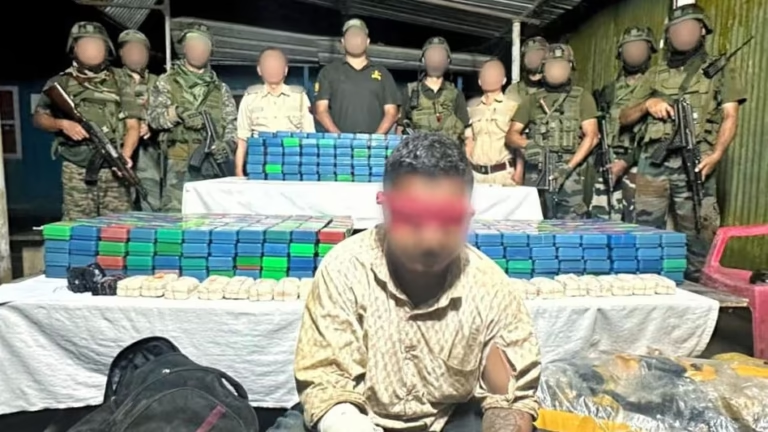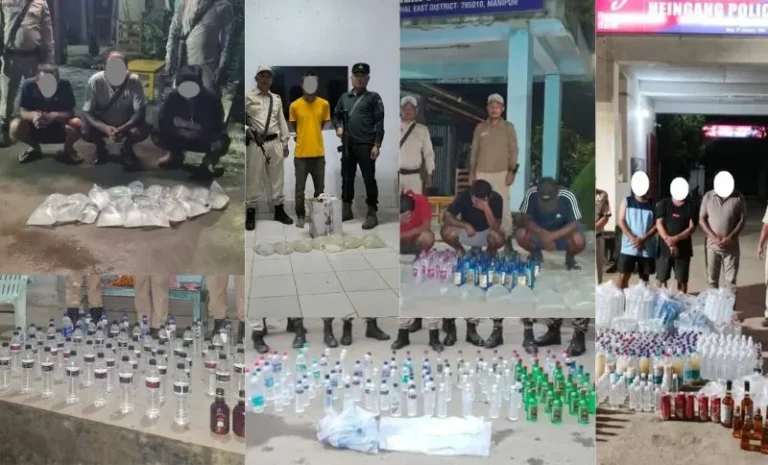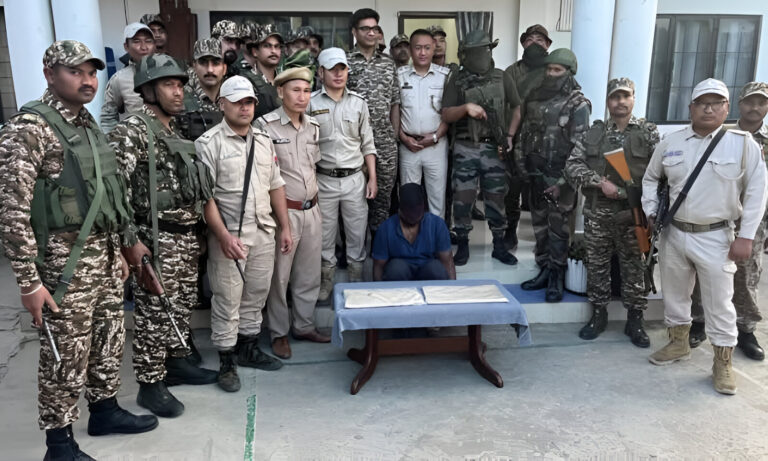Manipur Security Forces Recover Massive Cache of Arms and Explosives in Imphal East and Kangpokpi
Summary of the News
In a commendable operation, security forces in Manipur seized a significant stockpile of weapons and explosives in Imphal East and Kangpokpi districts. This recovery highlights the ongoing challenges posed by insurgent activities in the region. The operation led to the confiscation of rifles, machine guns, grenades, improvised explosive devices (IEDs), and other ammunition, showcasing the persistent efforts of authorities to ensure safety in Manipur.
Manipur’s Recent Arms Haul: A Deep Dive into the Details
Introduction: Why Does This Matter?
Have you ever wondered why regions like Manipur often make headlines for such operations? The recovery of arms isn’t just about numbers—it’s a mirror of the challenges this picturesque state faces daily. Nestled in India’s northeast, Manipur is a land of vibrant culture and natural beauty. Yet, it also sits at the crossroads of insurgency and conflict, making security a constant concern.
This article peels back the layers of the operation, the weapons unearthed, and what this means for Manipur’s fragile peace.
Manipur’s Struggles: A Background Check
Manipur isn’t just another state—it’s a geopolitical hotspot. Sharing borders with Myanmar, it becomes a prime location for the smuggling of arms and illegal trade. The rugged terrain here? Perfect hideouts for insurgent groups. Add in socio-political tensions, ethnic diversity, and unresolved grievances, and you have a recipe for unrest.
This context is essential to understand why operations like the recent one are pivotal.
Inside the Operation: What Was Found?
Security forces conducted search operations in two key areas:
1. Imphal East District
In villages like Nungbram and Lairok Vaiphei, authorities recovered:
- 1 Russian RPD Machine Gun (7.62mm)
- 1 INSAS Rifle (5.56mm)
- 2 hand grenades and 2 WP grenades
- 2.5 kg of explosives
- Mortars, launchers, and over 100 live rounds
2. Kangpokpi District
From Laimaton Thangbuh, near Nepali Khutti, the haul included:
- 1 modified sniper rifle
- 1 IED with a detonator
- Safety fuses and commercial explosives
- Anti-riot shells and additional ammunition
This wasn’t a minor bust—it’s a clear indication of the firepower insurgents hold.
What Does This Mean for Manipur’s Security?
Let’s not sugarcoat it: this recovery is both a win and a wake-up call. The variety and sophistication of the weapons suggest that insurgent groups are well-funded and highly organized. The use of grenades, mortars, and IEDs points to the potential for large-scale violence.
Challenges Ahead
- Porous Borders: With Myanmar just next door, arms smuggling is a constant challenge.
- Difficult Terrain: Dense forests and rugged hills make operations tough for security forces.
- Insurgent Support: Local backing for militant groups complicates crackdowns.
How Are Security Forces Tackling This?
The recent operation wasn’t a fluke—it’s part of a broader strategy. Here’s what they’re doing:
- Area Domination: Regular patrols in vulnerable zones keep insurgents on their toes.
- Community Ties: Building trust with locals helps gather intelligence.
- Advanced Training: Forces are constantly upgrading their skills and resources.
The aim? To disrupt insurgent networks and prevent such caches from reaching their end-users.
Community Involvement: A Game-Changer
Insurgency isn’t just a military problem—it’s a societal one. Security forces are actively involving local communities, which makes a huge difference. Why? Because locals know their terrain and people better than anyone.
- Information Sharing: Locals tipping off authorities can prevent violence.
- Peacebuilding: Dialogue and trust-building initiatives reduce the appeal of militancy.
It’s like fixing a leaky pipe—you don’t just patch the hole; you address the water pressure, too.
The Bigger Picture: Government Efforts
The government isn’t sitting idle. Both state and central authorities are investing in:
- Infrastructure: Better roads, schools, and hospitals can bridge the development gap.
- Employment Schemes: Jobs reduce the lure of insurgency for unemployed youth.
- Dialogue: Negotiating with willing insurgent groups fosters peace.
Why Should You Care?
You might think, “Why should I bother about a state far away?” Here’s why: Manipur is part of our collective identity. Its peace is our peace. Operations like these save lives, protect livelihoods, and pave the way for development.
Final Thoughts
The recovery of arms and explosives in Manipur is a stark reminder of the challenges the state faces. But it’s also a beacon of hope—proof that consistent efforts can yield results. The road ahead is long, but with the right mix of force, dialogue, and community support, lasting peace isn’t just a dream—it’s a possibility.
FAQs
- What weapons were recovered in the operation?
A wide range, including machine guns, sniper rifles, grenades, mortars, and explosives. - Why is Manipur a hotspot for insurgency?
Its strategic location, porous borders with Myanmar, and socio-political complexities make it vulnerable. - How do security forces gather intelligence?
By collaborating with local communities and conducting surveillance in high-risk areas. - What steps is the government taking to address insurgency?
Infrastructure development, employment programs, and dialogue with militant groups. - Can operations like these ensure lasting peace?
They’re a start, but sustainable peace requires addressing the root causes of unrest.



